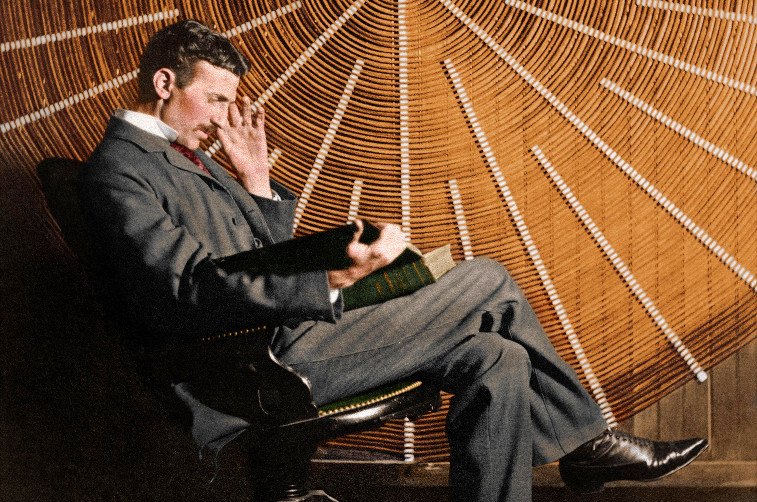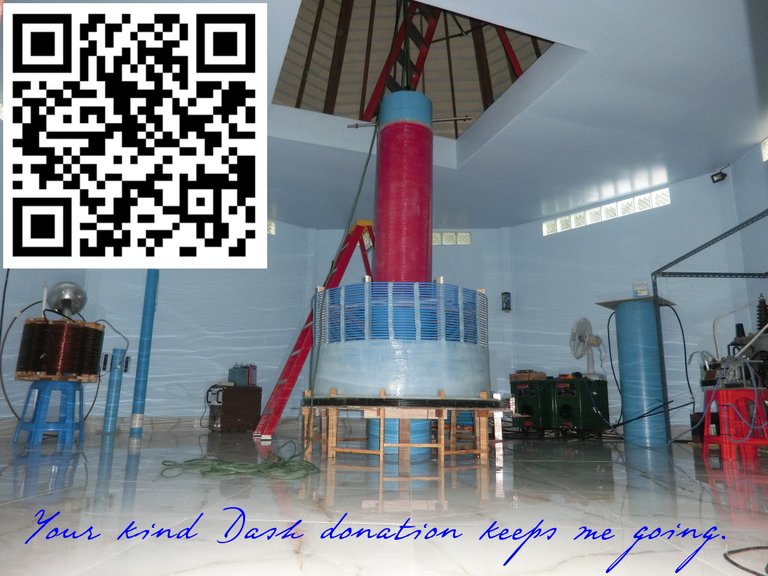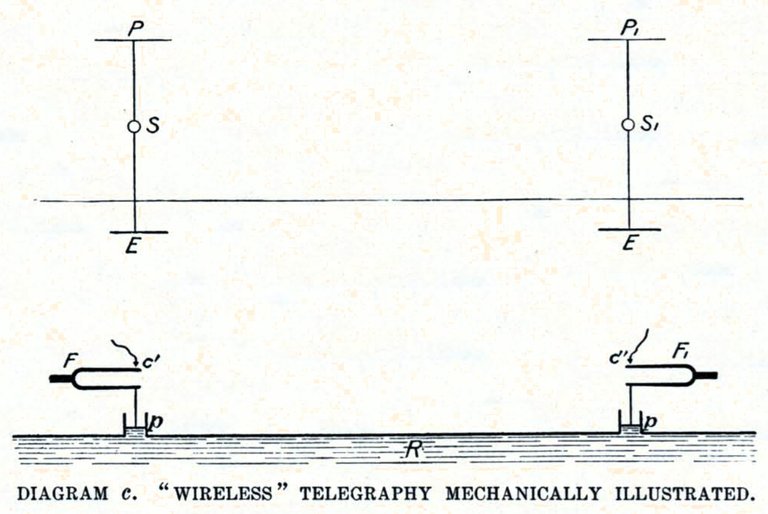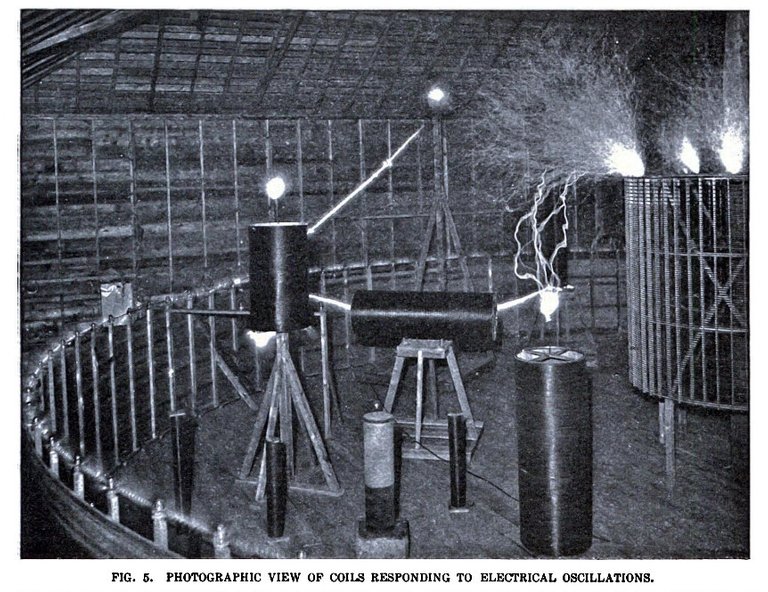Here we are in 2018, over a hundred years later speculating about what could have been Nikola Tesla’s secret. I then think to myself: if only I could show you what I read, you would understand that there is no secret. When I read his articles and patents from 1900 onward, what I see is a man desperately trying to get his views across. He tries again and again in many different ways, but no-one seems to see what I see.

(Some internet fools say that Tesla is reading Boskovich here. As anyone can read in the article of May 20th, 1896 “Tesla’s Important advances”, he was reading one of the "Scientific Papers" of Maxwell)
It is my sincere wish that one day people will read Tesla’s articles and really understand what he is saying.
So… Let me take you by the hand an walk you through his most famous article: “The Problem of Increasing Human Energy”, published in Century Illustrated Magazine of June 1900.
After having explained everything there is to know, Tesla now proceeds with telling about his practical work of late.
Previous parts can be found here:
Part 1: Laying a foundation
Part 2: What is electricity?
Part 3: Burning Nitrogen...
Part 4: How to overcome natural resistance
Part 5: Telautomatics
Part 6: Introduction to Harnessing the Sun’s Energy
Part 7: The Manufacture of Iron? Or ...
Part 8: The coming age of aluminium
Part 9: The cold-coal battery
Part 10: Energy from the medium
Part 11: A departure from known methods
Part 12: The self-acting engine
Part 13: Discovery of unexpected properties of the atmosphere
We continue in the main article where we’d left off.
"WIRELESS" TELEGRAPHY
—THE SECRET OF TUNING—ERRORS IN THE HERTZIAN INVESTIGATIONS—A RECEIVER OF WONDERFUL SENSITIVENESS.
The coil shown in the photograph has its lower end or terminal connected to the ground, and is exactly attuned to the vibrations of a distant electrical oscillator. The lamp lighted is in an independent wire loop, energized by induction from the coil excited by the electrical vibrations transmitted to it through the ground from the oscillator, which is worked only to five per cent. of its full capacity.As the first valuable result of my experiments in this latter line a system of telegraphy without wires resulted, which I described in two scientific lectures in February and March, 1893. It is mechanically illustrated in diagram c, the upper part of which shows the electrical arrangement as I described it then, while the lower part illustrates its mechanical analogue. The system is extremely simple in principle. Imagine two tuning-forks F, F1, one at the sending- and the other at the receiving-station respectively, each having attached to its lower prong a minute piston p, fitting in a cylinder. Both the cylinders communicate with a large reservoir R, with elastic walls, which is supposed to be closed and filled with a light and incompressible fluid. By striking repeatedly one of the prongs of the tuning-fork F, the small piston p below would be vibrated, and its vibrations, transmitted through the fluid, would reach the distant fork F1, which is "tuned" to the fork F, or, stated otherwise, of exactly the same note as the latter.
The fork F1 would now be set vibrating, and its vibration would be intensified by the continued action of the distant fork F until its upper prong, swinging far out, would make an electrical connection with a stationary contact c'', starting in this manner some electrical or other appliances which may be used for recording the signals. In this simple way messages could be exchanged between the two stations, a similar contact c' being provided for this purpose, close to the upper prong of the fork F, so that the apparatus at each station could be employed in turn as receiver and transmitter.
The electrical system illustrated in the upper figure of diagram c is exactly the same in principle, the two wires or circuits ESP and E1S1P1, which extend vertically to a height, representing the two tuning-forks with the pistons attached to them. These circuits are connected with the ground by plates E, E1, and to two elevated metal sheets P, P1, which store electricity and thus magnify considerably the effect. The closed reservoir R, with elastic walls, is in this case replaced by the earth, and the fluid by electricity. Both of these circuits are "tuned" and operate just like the two tuning-forks. Instead of striking the fork F at the sending-station, electrical oscillations are produced in the vertical sending- or transmitting-wire ESP, as by the action of a source S, included in this wire, which spread through the ground and reach the distant vertical receiving-wire E1S1P1, exciting corresponding electrical oscillations in the same. In the latter wire or circuit is included a sensitive device or receiver S1, which is thus set in action and made to operate a relay or other appliance. Each station is, of course, provided both with a source of electrical oscillations S and a sensitive receiver S1, and a simple provision is made for using each of the two wires alternately to send and to receive the messages.
FIG. 5. PHOTOGRAPHIC VIEW OF THE COILS RESPONDING TO ELECTRICAL OSCILLATIONS.
The picture shows a number of coils , differently attuned and responding to the vibrations transmitted to them through the earth from an electrical oscillator. The large coil on the right, discharging strongly, is tuned to the fundamental vibration, which is fifty thousand per second; the two larger vertical coils to twice that number; the smaller white wire coil to four times that number, and the remaining small coils to higher tones. The vibrations produced by the oscillator were so intense that they affected perceptibly a small coil tuned to the twenty-sixth higher tone.The exact attunement of the two circuits secures great advantages, and, in fact, it is essential in the practical use of the system. In this respect many popular errors exist, and, as a rule, in the technical reports on this subject circuits and appliances are described as affording these advantages when from their very nature it is evident that this is impossible. In order to attain the best results it is essential that the length of each wire or circuit, from the ground connection to the top, should be equal to one quarter of the wave-length of the electrical vibration in the wire, or else equal to that length multiplied by an odd number. Without the observation of this rule it is virtually impossible to prevent the interference and insure the privacy of messages. Therein lies the secret of tuning. To obtain the most satisfactory results it is, however, necessary to resort to electrical vibrations of low pitch. The Hertzian spark apparatus, used generally by experimenters, which produces oscillations of a very high rate, permits no effective tuning, and slight disturbances are sufficient to render an exchange of messages impracticable. But scientifically designed, efficient appliances allow nearly perfect adjustment.
An experiment performed with the improved apparatus repeatedly referred to, and intended to convey an idea of this feature, is illustrated in Fig. 5, which is sufficiently explained by its note.
These few paragraphs and pictures are all about resonance, tuning and the importance of the wire length.
Since I described these simple principles of telegraphy without wires I have had frequent occasion to note that the identical features and elements have been used, in the evident belief that the signals are being transmitted to considerable distance by "Hertzian" radiations. This is only one of many misapprehensions to which the investigations of the lamented physicist have given rise. About thirty-three years ago Maxwell, following up a suggestive experiment made by Faraday in 1845, evolved an ideally simple theory which intimately connected light, radiant heat, and electrical phenomena, interpreting them as being all due to vibrations of a hypothetical fluid of inconceivable tenuity, called the ether. No experimental verification was arrived at until Hertz, at the suggestion of Helmholtz, undertook a series of experiments to this effect. Hertz proceeded with extraordinary ingenuity and insight, but devoted little energy to the perfection of his old-fashioned apparatus. The consequence was that he failed to observe the important function which the air played in his experiments, and which I subsequently discovered. Repeating his experiments and reaching different results, I ventured to point out this oversight. The strength of the proofs brought forward by Hertz in support of Maxwell's theory resided in the correct estimate of the rates of vibration of the circuits he used. But I ascertained that he could not have obtained the rates he thought he was getting. The vibrations with identical apparatus he employed are, as a rule, much slower, this being due to the presence of air, which produces a dampening effect upon a rapidly vibrating electric circuit of high pressure, as a fluid does upon a vibrating tuning-fork. I have, however, discovered since that time other causes of error, and I have long ago ceased to look upon his results as being an experimental verification of the poetical conceptions of Maxwell. The work of the great German physicist has acted as an immense stimulus to contemporary electrical research, but it has likewise, in a measure, by its fascination, paralysed the scientific mind, and thus hampered independent inquiry. Every new phenomenon which was discovered was made to fit the theory, and so very often the truth has been unconsciously distorted.
Tesla is very careful in saying that Maxwell's theory is probably wrong. But in later articles (already quoted in previous parts) he says so more directly. The most important fact that Maxwell got wrong, according to Tesla, is that Maxwell says that electric (and magnetic) effects are caused by an ether that behaves like an incompressible fluid, while Tesla says these are caused by a gaseous medium, and also that Maxwellian radiations are transverse while Tesla believes them to be longitudinal. As the top of a resonating HV coil rapidly changes polarity, it alternatively attracts and repels electric charges in the air. To understand this is important for anyone who would like to understand the TMT and that is why Tesla stresses this phenomenon, which of course results in “sound waves of electrified air” as he calls it in his article of Dec 21st, 1892.
When I advanced this system of telegraphy, my mind was dominated by the idea of effecting communication to any distance through the earth or environing medium, the practical consummation of which I considered of transcendent importance, chiefly on account of the moral effect which it could not fail to produce universally. As the first effort to this end I proposed at that time, to employ relay-stations with tuned circuits, in the hope of making thus practicable signalling over vast distances, even with apparatus of very moderate power then at my command. I was confident, however, that with properly designed machinery signals could be transmitted to any point of the globe, no matter what the distance, without the necessity of using such intermediate stations. I gained this conviction through the discovery of a singular electrical phenomenon, which I described early in 1892, in lectures I delivered before some scientific societies abroad, and which I have called a "rotating brush." This is a bundle of light which is formed, under certain conditions, in a vacuum-bulb, and which is of a sensitiveness to magnetic and electric influences bordering, so to speak, on the supernatural. This light-bundle is rapidly rotated by the earth's magnetism as many as twenty thousand times per second, the rotation in these parts being opposite to what it would be in the southern hemisphere, while in the region of the magnetic equator it should not rotate at all. In its most sensitive state, which is difficult to obtain, it is responsive to electric or magnetic influences to an incredible degree. The mere stiffening of the muscles of the arm and consequent slight electrical change in the body of an observer standing at some distance from it, will perceptibly affect it. When in this highly sensitive state it is capable of indicating the slightest magnetic and electric changes taking place in the earth. The observation of this wonderful phenomenon impressed me strongly that communication at any distance could be easily effected by its means, provided that apparatus could be perfected capable of producing an electric or magnetic change of state, however small, in the terrestrial globe or environing medium.
Questions that come to mind are: if the device is so sensitive that the stiffening of a muscle disturbs it, how do you prevent all the disturbing influences and pick up only those that you desire? Maybe Tesla wants to tell us something about the Earth's magnetism rotating it 20,000 times per second? How did Tesla measure this? How does he know that it would rotate in opposite direction on the southern hemisphere?
It makes me think of Birkeland currents, but… different.
What it is, I am not sure. This remains an obscure passage, but fortunately the only one.
To be continued.....
Too late to upvote? Consider a small Dash donation to support my work:

Your help is extremely appreciated!



Would you add steemstem as a tag for your posts to be read by the steemit scientific community ?
I'll try to remember that.